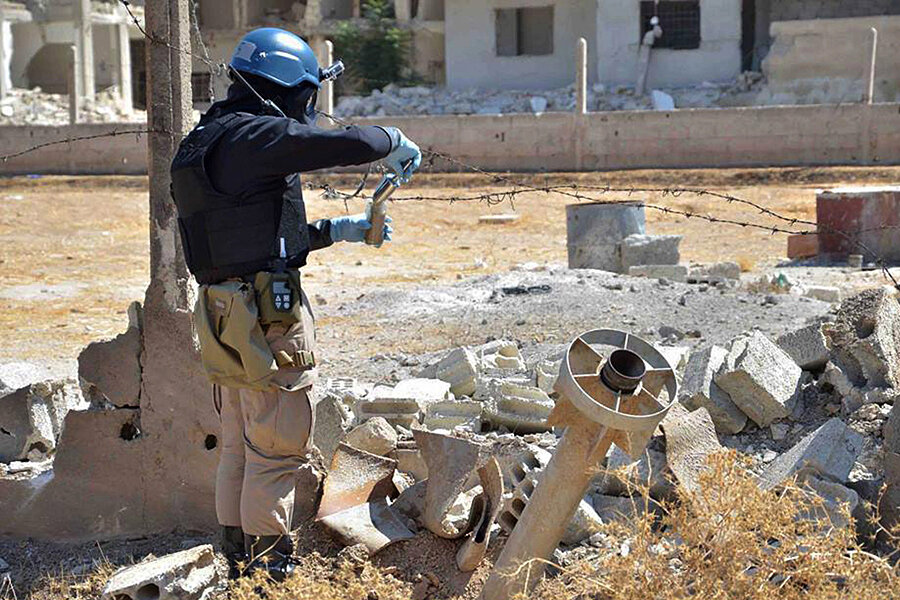Chemical weapons: How Pentagon plans to destroy Syria's stockpile at sea
Loading...
| Washington
The Pentagon has shed some more light on just how the international community plans to dispose of Syria’s most dangerous chemical weapons, which must be removed from the country by the end of December.
The current blueprint involves using newly designed portable decontamination units on a ship – currently docked in Norfolk, Va. – that is being specially retrofitted for the job.
While this offer of US help is still being mulled by the Organization for the Prohibition of Chemical Weapons, the Pentagon is forging ahead with its plans.
It has been about two years that the Pentagon has been puzzling over how best to dispose of Syrian chemical weapons, says a senior defense official, because “we knew at some point” the international community would need that capability.
Most of the components of Syria’s mustard gas and sarin is in bulk liquid storage, rather than in artillery shells or munitions. This is good news. The next challenge is how to neutralize it.
The Pentagon had considered incineration, but preventing the release of toxic gases into the environment requires a fixed location – and the biggest priority for the Syrian operation is that it be portable “in order to meet the ambitious timelines laid out in the UN Security Council resolution,” according to the senior defense official, who briefed Pentagon reporters on condition of anonymity.
These units, known as Field Deployable Hydrolysis Systems (FDHS), will mix the chemicals with water and bleach. The resulting waste – which will amount to five to fourteen times the volume of the chemical warfare materiel itself – will then be transported in roughly 150 teflon-coated shipping containers.
“It’s a proven technology – the chemicals and their reactions are well-understood,” the official said. “They’re safe, environmentally sound” and “we’re very, very comfortable with the technology,” the official added.
There will be 60 Defense Department civilians – but no US troops – on the Cap Ray, the Maritime Administration ship that the Pentagon has designated for the job.
They will work below deck in specially designed tents with carbon filtration systems, “so should there be a leak, which is a low probability, it would be contained,” said the official, who took pains to emphasize that “absolutely nothing will be dumped at sea.”
There will also be contractors to provide security and do other jobs on board the ship, for a total of roughly 100 personnel, according to another senior defense official.
There will also be no US troops in Syria or involved in securing port operations outside of the United States, according to the official. “We think this is a relatively low-risk operation.”
Pentagon planners are in the process of determining the “appropriate security envelope,” once the Cape May is underway, which involves deciding whether the ship will be escorted by US Navy vessels, according to the official.
The Pentagon “has decades of experience in the chemical de-militarization business,” the first official said, including programs underway to destroy America’s own chemical weapons arsenal, as well as working with Russia and Albania to destroy chemical weapons left over from the Cold War.





